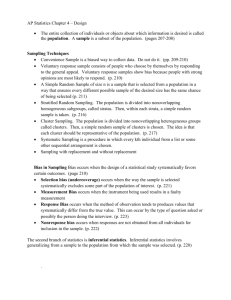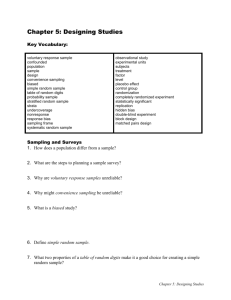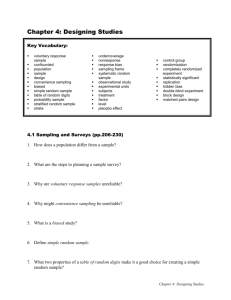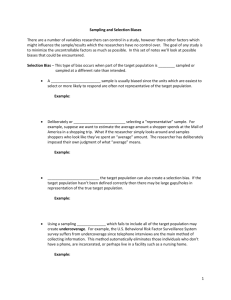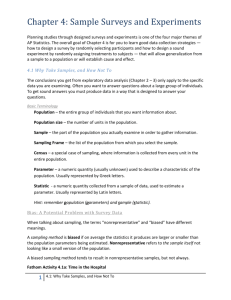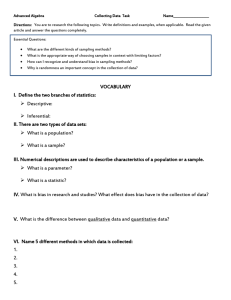Handout 3 Bias in Sampling
advertisement
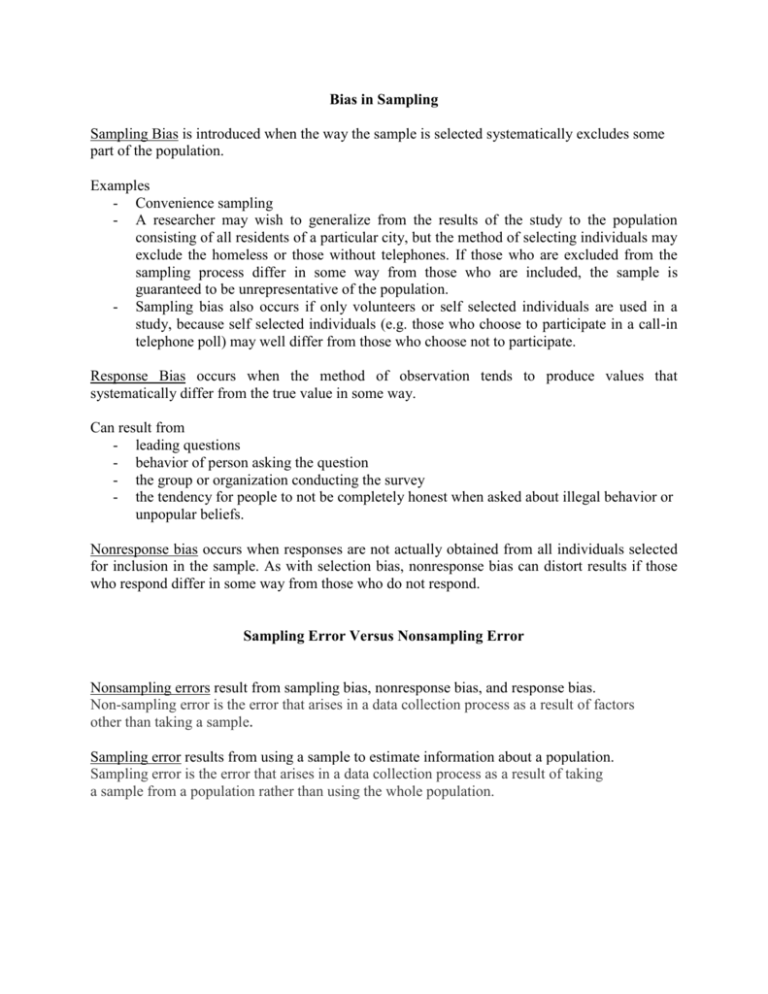
Bias in Sampling Sampling Bias is introduced when the way the sample is selected systematically excludes some part of the population. Examples - Convenience sampling - A researcher may wish to generalize from the results of the study to the population consisting of all residents of a particular city, but the method of selecting individuals may exclude the homeless or those without telephones. If those who are excluded from the sampling process differ in some way from those who are included, the sample is guaranteed to be unrepresentative of the population. - Sampling bias also occurs if only volunteers or self selected individuals are used in a study, because self selected individuals (e.g. those who choose to participate in a call-in telephone poll) may well differ from those who choose not to participate. Response Bias occurs when the method of observation tends to produce values that systematically differ from the true value in some way. Can result from - leading questions - behavior of person asking the question - the group or organization conducting the survey - the tendency for people to not be completely honest when asked about illegal behavior or unpopular beliefs. Nonresponse bias occurs when responses are not actually obtained from all individuals selected for inclusion in the sample. As with selection bias, nonresponse bias can distort results if those who respond differ in some way from those who do not respond. Sampling Error Versus Nonsampling Error Nonsampling errors result from sampling bias, nonresponse bias, and response bias. Non-sampling error is the error that arises in a data collection process as a result of factors other than taking a sample. Sampling error results from using a sample to estimate information about a population. Sampling error is the error that arises in a data collection process as a result of taking a sample from a population rather than using the whole population.

